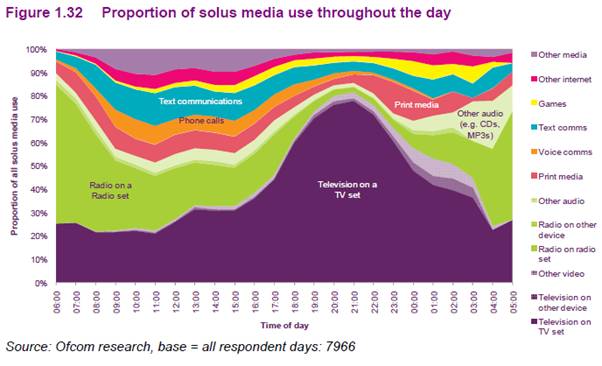Above-the-line promotion (ATL)
Above-the-line marketing refers to marketing expenditure on advertising in the media such as the press, radio, television, billboards, cinema and the World Wide Web.
Advertising is directed at a mass audience with the intention of reducing the level of price sensitivity by generating customer loyalty and repeat purchasing, which allows the firm to produce or buy in bulk and enjoy the advantages of economies of scale. Advertising is a media message paid for by a sponsor. It is clear who the advertiser is, and in most cases that the message is an advertisement. However, ATL promotions are difficult to measure in terms of actual sales generated.
The most important decision facing those responsible for advertising is which 'medium' to use. This decision will be influenced by considerations such as:
- The target audience - What do our target consumers read, watch and interact with?
- The size of the market - There is little point advertising a niche product to a mass market.
- The relative cost of the various media - firms will need to justify the cost of marketing by increases in sales revenue. Advertising can be very expensive so the choice of advertising may be restricted by the financial resources of the business.
- The time frame of the advert - How permanent does the firm wish the message to be? Does the firm want potential customers to have future reference?
- The nature of the product - What is the best medium to o get across the nature of the product? Is a visual impact necessary?
Successful advertising not only allows new products to be launched it also extends the life cycle of older lines within a product family.
Advertisers really need to understand the behaviour of potential and existing customers and to track social and cultural change to make their advertising as effective a possible and to reach the most number of customers. The following data from Ofcom on the UK identifies that not only are customers viewing a range of media, but that the time of day is important in the placement of advertising:

For advertising to be considered effective it should:
- reach the desired target audience
- be attractive and appealing to the target market
- generate more sales revenue than it costs the firm
Many companies employ agencies to design and track advertising campaigns. The agencies perform certain functions, which most companies either can't afford or don't have the expertise to run. These include:
- Doing the market research for the firm against an agreed format.
- Selecting the best medium for advertising the product or service.
- Developing and testing the campaign materials.
- Applying the funds the firm has set aside for the campaign.
- Tracking the outcome of the campaign and reporting back.
In addition to these functions, agencies also offer specialist services, expert advice and the combination all of the advantages in a cost effective package. Competition in this area of business is normally fierce and companies often change agencies and/or spread their products across a range of agencies.

For a short diversion, why not watch the video below to see some creative use of images in advertising?

Advertising is an area that you may feel confident with because you are immersed in the 24 hour media world! However, this is an area where students perform badly in examinations, because answers tend to be generalised and lack substance and relevant data. For example, telling the examiner about advertisements you have viewed is unlikely to earn many marks.
There are two other major problems:
- Marketing is not JUST advertising - it is ALL the elements of the marketing mix (4 or 7 Ps).
- Promotion is not JUST advertising - it includes ALL the elements, such as PR and direct selling.
Yes, advertising is important and many firms spend a significant proportion of their marketing budget on it - but do not underplay the role of the other elements of the market and promotional mixes.